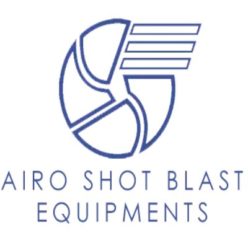The shot blasting industry is entering a decisive phase of technological evolution. While automation has been steadily influencing surface preparation over the past decade, 2026 is set to mark a turning point—the year when next-generation shot blasting automation becomes a strategic necessity rather than an optional upgrade. Driven by rising quality expectations, labor challenges, sustainability goals, and smart manufacturing trends, the industry is rapidly moving toward intelligent, connected blasting systems.
Airo Shot Blast is actively aligning its engineering roadmap with this shift, delivering automation solutions designed for the demands of modern industrial environments.
The Industrial Forces Driving Automation in 2026
Several converging factors are accelerating the adoption of advanced shot blasting automation. By 2026, these forces will reach a critical mass.
First, global industries are facing skilled labor shortages. Manual blasting operations depend heavily on experienced operators, and inconsistency becomes unavoidable when expertise is limited. Automated systems eliminate this dependency by embedding process intelligence directly into the machine.
Second, infrastructure and manufacturing projects are becoming larger and more time-sensitive. Automated shot blasting equipments offer predictable cycle times and repeatable results, which are essential for meeting strict delivery schedules.
Finally, environmental regulations are tightening. Automation enables precise abrasive control and efficient dust management, helping companies meet compliance standards without sacrificing productivity.
What Defines Next-Gen Shot Blasting Automation?
Next-generation automation goes far beyond basic motorized controls. It represents a fully integrated ecosystem where machines can monitor, adjust, and optimize their own performance in real time.
Key characteristics include:
- Intelligent PLC and HMI systems
- Sensor-driven process optimization
- Automated abrasive flow and recovery
- Energy-efficient drive technology
- Digital fault diagnostics and alerts
These features work together to create shot blasting systems that are not only faster, but also smarter and more reliable.
Smart Process Control for Unmatched Consistency
Consistency has always been a challenge in shot blasting, particularly across high-volume or multi-shift operations. Next-gen automation solves this through continuous process monitoring.
Sensors track blasting intensity, wheel speed, surface contact, and load variations. When deviations occur, the system automatically recalibrates parameters to maintain uniform surface finish. This ensures consistent cleanliness levels and surface profiles across every component or structure.
For industries such as automotive, aerospace, and heavy engineering, this level of consistency is becoming a baseline requirement rather than a competitive advantage.
Also Check – Shot Blasting Machine Price in India
Data-Driven Performance and Predictive Maintenance
One of the defining trends of 2026 is the shift toward data-driven maintenance strategies. Automated shot blasting machines are increasingly equipped with data collection and analytics capabilities.
These systems monitor wear patterns, vibration levels, and operational hours to predict component fatigue before failure occurs. Maintenance teams receive timely alerts, allowing them to schedule service during planned downtime instead of reacting to unexpected breakdowns.
This approach significantly reduces machine downtime, extends equipment lifespan, and lowers overall maintenance costs.
Energy Efficiency and Sustainable Blasting Operations
Sustainability is no longer a secondary consideration. Next-gen shot blasting automation places strong emphasis on energy optimization and resource efficiency.
Automated drive systems adjust power consumption based on load requirements, preventing energy waste during low-demand phases. Precise abrasive metering reduces material loss and minimizes dust generation.
By 2026, energy-efficient blasting systems will play a critical role in helping manufacturers meet sustainability targets while controlling operating expenses.
Also Check – Shot Blasting Machine Manufacturers in India
Improved Safety Through Intelligent Automation
Safety standards in industrial environments are becoming more stringent, and automation is a key enabler of compliance. Next-gen shot blasting machines feature advanced safety interlocks, automated shutdown protocols, and real-time fault detection.
If abnormal operating conditions are detected, the system can immediately stop blasting and alert operators through digital interfaces. This reduces the risk of accidents, equipment damage, and surface defects.
Automated systems also reduce physical strain on operators, contributing to safer and more ergonomic workplaces.
Seamless Integration with Smart Manufacturing
By 2026, shot blasting machine will no longer operate as isolated units. Instead, they will integrate seamlessly into Industry 4.0 manufacturing ecosystems.
Automated shot blasters can exchange data with upstream and downstream processes, enabling synchronized production flows. This connectivity supports centralized monitoring, performance benchmarking, and continuous process improvement.
Airo Shot Blast is developing automation platforms that are compatible with modern smart factory architectures, ensuring long-term scalability for its customers.
Why Early Adoption Matters
Companies that delay investment in next-gen shot blasting automation risk falling behind in efficiency, quality, and compliance. Early adopters benefit from lower operating costs, improved productivity, and stronger market positioning.
As automation becomes the industry standard in 2026, businesses equipped with intelligent blasting systems will be better prepared to handle complex projects and evolving customer expectations.
Conclusion
The year 2026 represents a defining milestone for the shot blasting industry. Next-generation automation will transform how surface preparation is planned, executed, and optimized. From intelligent process control and predictive maintenance to energy efficiency and smart factory integration, automated shot blasting systems are shaping the future of industrial surface treatment.
With its forward-looking approach to engineering and innovation, Airo Shot Blast is positioned to lead this transition—delivering automated shot blasting solutions that meet the demands of tomorrow’s industry, today.
Explore more –
https://site-5xdfaai0i.godaddysites.com/f/top-smart-features-to-look-for-in-new-shot-blasters
